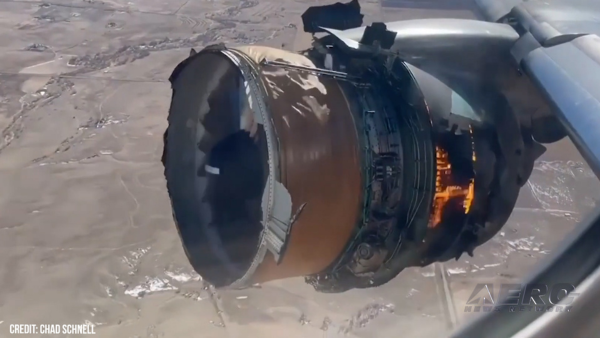Sun, Nov 20, 2022
AD 2022-22-07 Requires Repetitively Inspecting The Fuselage Skin Panels...
The FAA is adopting a new airworthiness directive (AD) for certain Piaggio Aviation S.p.A. (type certificate previously held by Piaggio Aero Industries S.p.A.) (Piaggio) Model P-180 airplanes.

This AD was prompted by mandatory continuing airworthiness information (MCAI) originated by an aviation authority of another country to identify and correct an unsafe condition on an aviation product. The MCAI identifies the unsafe condition as corrosion in the bottom fuselage area of the cabin compartment due to inner and outer sides of fuselage skin panels of certain airplanes treated with the less effective primer. This AD requires repetitively inspecting the fuselage skin panels, visually inspecting the entire fuselage inner side skin if necessary, and taking any necessary corrective actions. The FAA is issuing this AD to address the unsafe condition on these products. This AD is effective December 23, 2022.
Supplementary Information: The FAA issued a notice of proposed rulemaking (NPRM) to amend 14 CFR part 39 by adding an AD that would apply to certain serial-numbered Piaggio Model P-180 airplanes. The NPRM published in the Federal Register on June 17, 2022 (87 FR 36415). The NPRM was prompted by MCAI originated by the European Union Aviation Safety Agency (EASA), which is the Technical Agent for the Member States of the European Union. EASA issued EASA AD 2021-0104, dated April 15, 2021 (referred to after this as “the MCAI”), to address the unsafe condition on certain serial-numbered Piaggio Model P.180 airplanes.
The MCAI states:
- Occurrences were reported where, during routine inspections, diffused corrosion was detected on the fuselage inner side skin in the area of the passenger cabin. Evidence indicates that the presence of undetected (infiltrated or condensed) water, trapped in between the inner surface of fuselage skin panels and the thermo-acoustic insulation panels, could have started a galvanic corrosion phenomenon, mainly in the bottom fuselage area of the cabin compartment. Fuselage skin panels of certain aeroplanes, delivered from 2009 to 2013, were treated with the first type of “chromate-free” primer, chemically not as effective against corrosion when compared to those containing chrome. The phenomenon has been observed on aeroplanes subjected to prolonged inactivity and not stored in a hangar, or those operating in an environment with high humidity and/or frequent heavy precipitation, combined with a possible deterioration of window sealing due to normal aging, wear and tear.
- This condition, if not corrected, could affect the structural integrity of the fuselage.
- To address this potential unsafe condition, Piaggio published the [Piaggio Service Bulletin (SB) 80-0405, Revision 0, dated March 15, 2021] SB to provide inspection instructions.
- For the reason described above, this [EASA] AD requires repetitive inspections of each affected area and, if necessary, an additional visual inspection of the entire fuselage inner side skin and, depending on findings, accomplishment of applicable repair. This [EASA] AD also requires reporting the inspection results to Piaggio.
You may examine the MCAI in the AD docket at regulations.gov under Docket No. FAA-2022-0599.
In the NPRM, the FAA proposed to require repetitively inspecting the fuselage skin panels, visually inspecting the entire fuselage inner side skin if necessary, and taking any necessary corrective actions. The FAA is issuing this AD to prevent degradation of the structural integrity of the fuselage. The unsafe condition, if not addressed, could lead to loss of control of the airplane.
More News
Also: New SAF, Korean Air Buys 103 Boeings, Maryland SP Helo Rescue, OK AWOS Update Gulfstream Aerospace Corporation announced its first customer delivery of the all-new Gulfstream>[...]
"This is just an absolute win win win. If there is a rejected takeoff we now have the confidence that the arrestor system will ensure passenger and crew safety." Source: FAA Admini>[...]
Low Approach An approach over an airport or runway following an instrument approach or a VFR approach including the go-around maneuver where the pilot intentionally does not make c>[...]
Aero Linx: Historic Aircraft Association (HAA) The Historic Aircraft Association (HAA) was founded in 1979 with the aim of furthering the safe flying of historic aircraft in the UK>[...]
While Flying About 1,500 Ft Above Ground Level, A Large Bird Struck The Right Side Of The Airplane Analysis: The pilot reported that while flying about 1,500 ft above ground level,>[...]
 Airborne 08.29.25: G800 Delivery, Alaska F-35 Crash, USCG-RCAF Medevac
Airborne 08.29.25: G800 Delivery, Alaska F-35 Crash, USCG-RCAF Medevac Aero-News: Quote of the Day (08.30.25)
Aero-News: Quote of the Day (08.30.25) ANN's Daily Aero-Term (08.30.25): Low Approach
ANN's Daily Aero-Term (08.30.25): Low Approach ANN's Daily Aero-Linx (08.30.25)
ANN's Daily Aero-Linx (08.30.25) NTSB Final Report: Excalibur Excalibur
NTSB Final Report: Excalibur Excalibur



